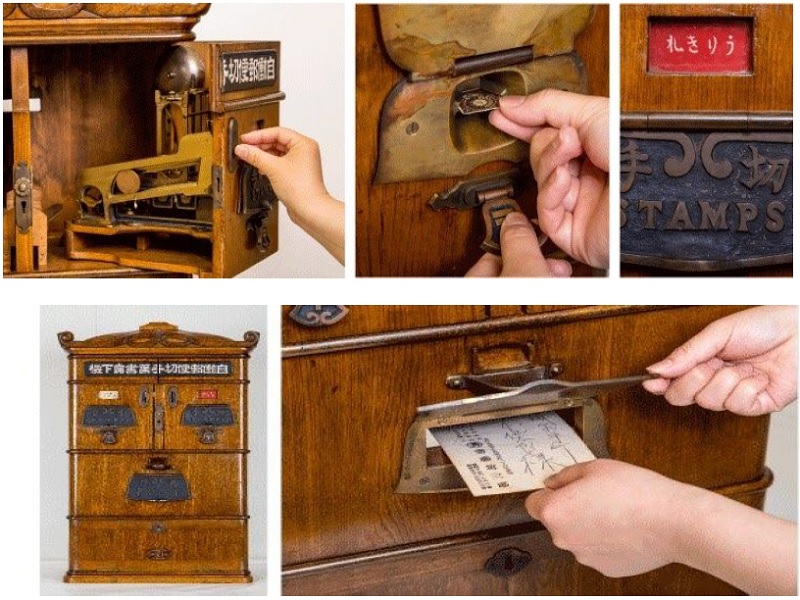Vending machines
Vending machines ( Jidōhanbaiki 自動販売機) are everywhere in Japan today. Most of these are vending machines for various drinks, cold or hot, but there are also those for cigarettes, ice cream and various foods.
Generally, prices are higher because, as in Conbini, you can conveniently buy what you want, anywhere, 24 hours a day.

Photo by Japanforeveryone.com
Its origins
The oldest vending machine in the world is said to be the ‘Water Organ Dispenser’; it is mentioned in the book ‘Pneumatika’ written by an ancient Greek mathematician, engineer and inventor, Hérōn ho Alexandréus (its chronological location is uncertain and oscillates between the 1st and 3rd centuries).
The instrument worked thanks to the weight of the coins inserted, and was placed in the temple in 215 BC.
Its development
In the late 1800s, after the Industrial Revolution, a vending machine similar to today’s models was born in England. At that time, a basic technique of the instrument was invented, and it began to sell drinks, snacks, various foodstuffs, tickets, cigarettes and others; interestingly, there was also a working machine for books, mainly for the purpose of promoting the ‘Freedom of Speech’ movement.
Its History in Japan
The oldest dispenser in the country and still in existence today is the ‘Postage Stamp and Postcard Dispenser’, which in 1904 was produced by a Japanese inventor, Takashichi Tawaraya (俵屋 高七 / 1854 – 1912). Besides the purchase of those goods, it also functioned as a ‘postal’ service: the Japanese post office, which we find today, is built based on a model created by the genius Tawaraya. He also designed another cigarette dispenser, which unfortunately no longer exists.

In 1925, William Rowe (1884 – 1945) invented a vending machine for buying various products with different prices. Then, in 1962, a new model of Coca Cola became popular thanks to the collaboration between the American Bend Company and Mitsubishi Heavy Industries. From then on, it began to spread in the country in earnest. This was possible because in Japan the level of ‘Security’ was very good and it had just entered the period called the ‘Japanese Economic Miracle’, which led the population to spend more money, including on distributors.
Subsequently, in 1967, there was the ‘money recasting’, a revisiting of the 50 and 100 Yen coins of the time, due to the size of the new currency, people began to consume many more 100 Yen coins, bringing even more convenience in the use of vending machines; in this period, the vending machine for train, bus and metro tickets was also created.
In 1974, the typical feature of Japanese vending machines ‘Cold and hot drinks’ was born: with a single machine, one could buy both cold and hot drinks! This revolutionary feature was highly appreciated by other countries around the world.
In conclusion
Since ancient times, the vending machine has developed, also culturally, in different ways, and many times it is thought that it originated in Japanese culture, but it is really interesting to discover its origin and development in various places, which even the Japanese do not know.
Today, in Japan, the income from this activity is the highest in the world, 5 trillion Yen in a whole year, which, considering the Konbini’s 10 trillion, does not seem small at all!
Author
Chinami Matsushima
